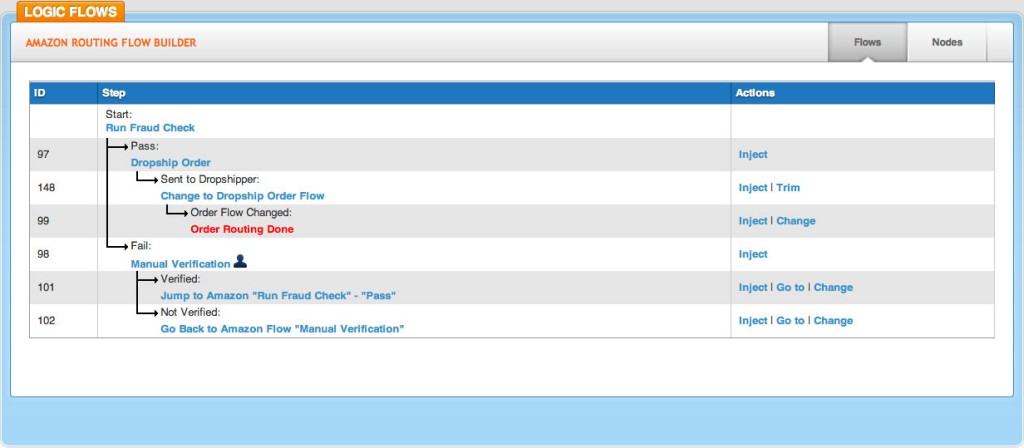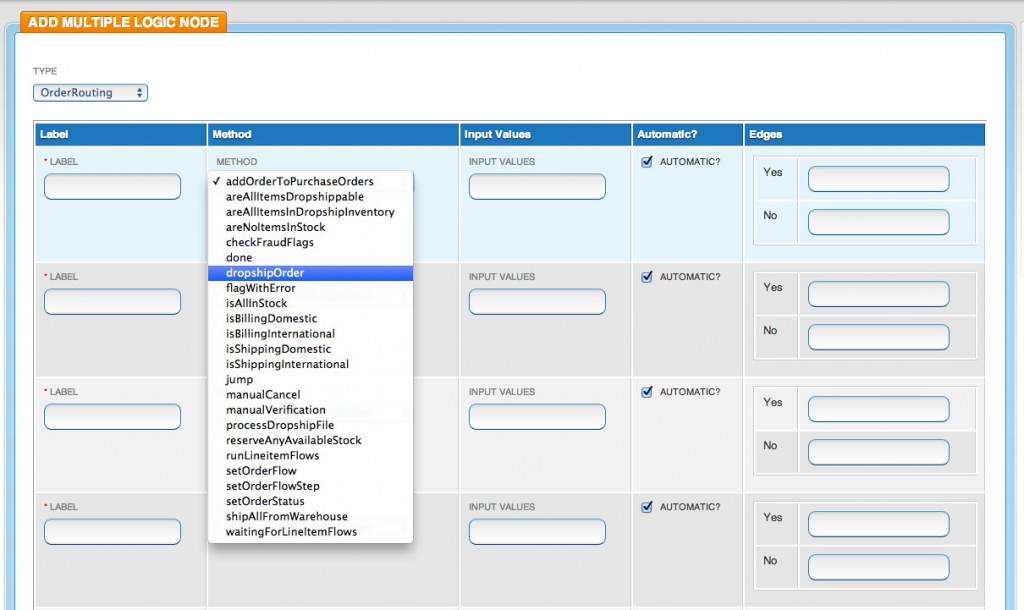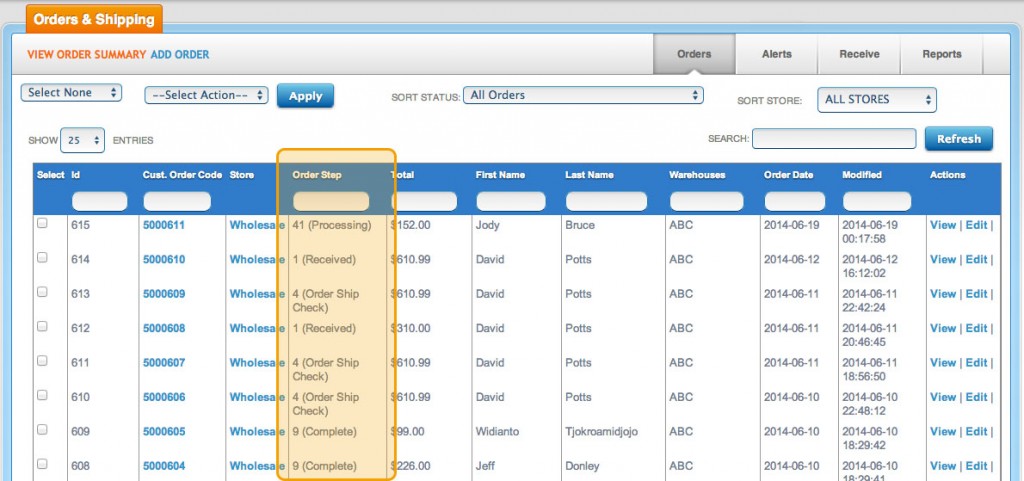Updated Feature: Order Routing Rules
Retailers need the ability to automate operational processes. With multiple sales channels, fulfillment locations and order steps, having the ability to design custom order routing rules to circumvent manual tasks becomes invaluable. SalesWarp ENTERPRISE has always offered retailers a way to create order routing rules by building custom order flows to match the needs of their business, but we’re especially excited about the new order routing features available in the upcoming 2.7 release.
The new order flow interface in SalesWarp 2.7 offers a visual and straightforward tool for retailers to design custom routing rules for processes like order fulfillment, dropshipping, purchase orders, returns, exchanges and more. Order flows are now displayed like diagrams so that every step and every possible outcome for each step is visible on one screen.

In SalesWarp ENTERPRISE 2.7, order flows are built with nodes, and nodes are highly customizable. Once a node is created, it can be placed into any order flow. Additionally, entire order flows can be placed into other order flows when applicable. For example, in the order flow above for routing Amazon orders, if the fraud check has passed, the order flow advances to the Drop Ship Order Flow. If the fraud check fails, the order flow moves on to the next step in the Amazon Routing Flow.
Building new order routing rules in SalesWarp ENTERPRISE 2.7 is easy. Adding nodes to a flow is as easy as labeling the node, selecting the action from a drop-down menu, and specifying the input values. Each node has smart logic built in the back-end, and can easily be created from an interface with text fields and customized drop-down menus.
As part of the implementation process for SalesWarp ENTERPRISE, a retailer works with a team of developers to specify the drop-down menu items depending on the retailer’s operations. The system is designed to adapt to the retailer’s existing order routing rules and order fulfillment procedures. Order flows can be assigned to orders or to individual line items within an order. And because SalesWarp is delivered as commercial source code, the options for order flow nodes are completely flexible.
As an order moves through an order flow, SalesWarp progresses the order status, displaying the current order step, and whether or not that step has been completed. Most retail management systems offer automated processes, but few offer the level of scope and customization of SalesWarp’s order routing rules. And now with the new order flow interface in 2.7, retailers have an easy to use interface for creating and editing order routing rules. The 2.7 release of SalesWarp ENTERPRISE is now available to new customers, and existing customers have the option of adding the new 2.7 features.
Request a demo to see how easy it really is!


